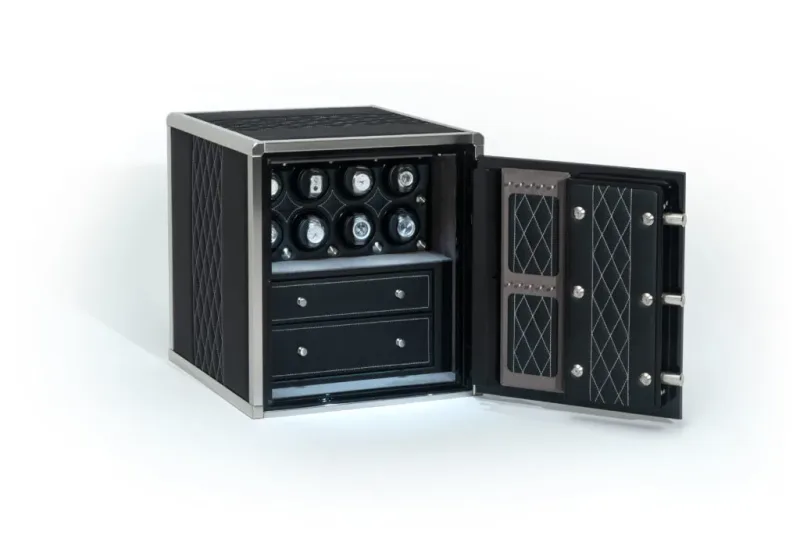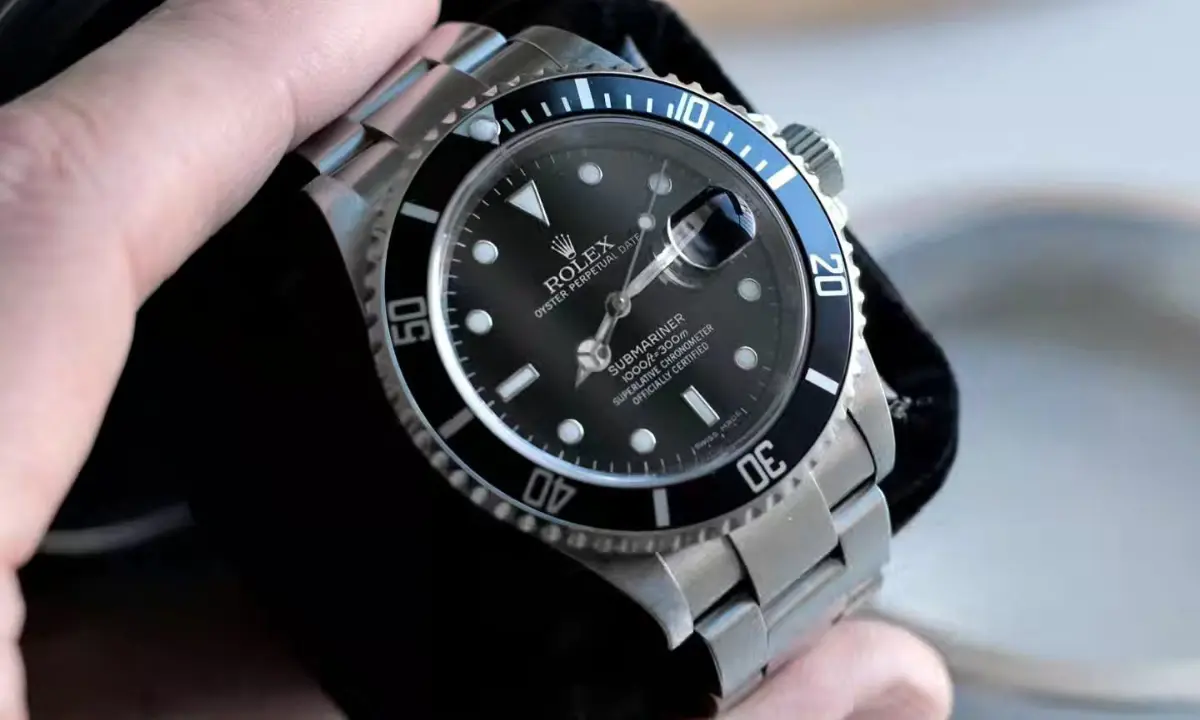Share This Post
A Rolex is built to last, but what happens when you’re not wearing it? Should you let it sit, wind it manually, or keep it moving in a watch winder? The answer depends on three key factors: how often you wear your watch, the complexity of your watch’s features, and your personal preferences.
For most owners, the decision comes down to convenience versus necessity. Let’s explore the fundamentals of Rolex movement and storage options to help you make an informed decision.

Caliber 3235 movement
Understanding Rolex Automatic Movements
Before deciding on a storage method, it’s important to understand how your Rolex works. Rolex watches feature self-winding automatic movements that harness energy from your wrist’s natural motion.
Depending on the model, Rolex watches have impressive power reserves, typically between 48 and 72 hours. That means your watch can sit for 2-3 days and keep perfect time. Newer models with the Caliber 3235 movement can run for up to 70 hours, while older models might have shorter reserves.
Once this reserve is depleted, the watch stops running. This stopping isn’t harmful to the watch mechanism itself, but it does mean you’ll need to reset the time and date when you pick it up again.
Do you have to keep winding a Rolex?
Not necessarily, but it depends on your wearing habits:
- Daily Wear: If you wear your Rolex every day, natural movement will keep it wound.
- Occasional Wear: If you rotate between watches or only wear your Rolex for special occasions, you must either manually wind it before each Use or consider a watch winder.
- Long-Term Storage: For watches stored for weeks or months, allowing them to stop is generally acceptable, but there are considerations regarding lubricant distribution (more on below).
What is a Watch Winder, and How Does It Work?
A watch winder is a device that mimics wrist movement, rotating your watch at specific intervals. This rotation causes the internal rotor to spin, which winds the mainspring and keeps the watch running.
What Are Turns Per Day (TPD)?
TPD refers to how many complete rotations a watch winder performs in 24 hours. Different watch movements require different TPD settings:
- Most Rolex models work well with 650-750 TPD.
- Complicated models like the Day-Date or Sky-Dweller may benefit from 800-950 TPD
- Using too high a TPD setting won’t damage your Rolex (thanks to its slip-clutch mechanism), but it may cause unnecessary wear on moving parts.
Is it okay to leave a Rolex on a watch winder?
Yes, with proper settings. Here’s what to consider:
- Rotation Direction: Rolex watches wind most efficiently with bidirectional rotation (both clockwise and counterclockwise). Single-direction winders are less effective for Rolex movements.
- Proper TPD Setting: Choose a winder with adjustable TPD settings that match your Rolex model’s requirements.
- Intermittent Operation: Quality winders don’t rotate continuously but operate in cycles with rest periods, which better mimics natural wear patterns.
The benefits of using a watch winder include:
- Always have a ready-to-wear timepiece with an accurate time and date
- Maintaining even distribution of lubricants throughout the movement
- Reducing the need to manipulate the crown, which can wear out over time
The potential drawbacks include:
- Continuous running may increase wear on certain components
- Additional cost for a quality winder
- Unnecessary for watches worn daily
Watch Storage Options: Comparing All Methods
When not wearing your Rolex, you have several storage options:
Watch Winders
Pros:
- Keeps the watch running and ready to wear
- Particularly valuable for complicated watches (GMT, Datejust, Day-Date)
- It helps maintain even lubricant distribution
Cons:
- More expensive than other storage options
- It may cause unnecessary wear if used incorrectly
- Requires power source
Watch Boxes
Pros:
- Protects from dust and physical damage
- Cost-effective option
- Ideal for long-term storage of rarely worn watches
Cons:
- Don’t keep the watch running
- You’ll need to reset the time/date when you wear it again

Image source: brownsafe.com
Watch Safes
Pros:
- Maximum security for valuable collections
- Protection from theft and environmental damage
- Many include built-in winders
Cons:
- Expensive
- Takes up significant space
- It is overkill for a single-watch
Watch Rolls (for Travel)
Pros:
- Portable and protective
- Prevents scratches during transport
- Space-efficient
Cons:
- Not ideal for long-term storage
- Doesn’t keep watch wound
Technical Considerations for Long-Term Storage
When a watch sits unworn for extended periods (months or years), there are mechanical considerations beyond just keeping accurate time:
Lubricant Distribution
Modern watch lubricants are designed to remain stable for long periods. However, some watchmakers suggest that periodic movement helps distribute lubricants more evenly throughout the movement, potentially extending service intervals.
Impact on Service Intervals
Rolex recommends servicing every 10 years. Using a watch winder won’t eliminate the need for regular servicing, but it may help maintain movement health between services, especially for watches worn infrequently.
Complications and Calendar Functions
Watches with date, day, or more complex calendar functions benefit significantly from continuous running. A perpetual calendar Rolex can correctly track months and leap years without adjustment—but only if it keeps running.
Who Benefits Most from a Watch Winder?
Based on the information above, here’s who should consider using a watch winder:
- Collectors with multiple watches who rotate between timepieces
- Owners of complicated Rolex models (GMT, Datejust, Day-Date, Sky-Dweller, Yacht-Master II)
- Those who wear their Rolex occasionally but want it ready when needed
- Individuals who find manual settings tedious or difficult
Conclusion: Making the Right Choice for Your Rolex
A Rolex is built for a lifetime, but where it rests when you’re not wearing it makes a difference. If it’s on your wrist daily, it stays wound naturally. But if it spends more time in a drawer, a watch winder for Rolex keeps it running, so it’s always set and ready to wear.
For effortless upkeep, Mozsly watch winder is a solid choice. With customizable Rolex watch winder settings, near-silent operation, and precision engineering, it keeps your timepiece in peak condition, ensuring it’s always ready when you are.
Related Post's
Featured Video
Provide an email subscription feature for users to sign up for updates.
Follow the world of watches and cigars for exclusive content!
By subscribing to our newsletter, you will be the first to receive notifications of our latest articles, popular posts and special events.








